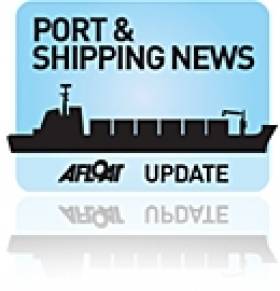Displaying items by tag: Newbuild tankers
Swedish Shipping Operator on Irish Sea Orders 8 Newbuilds Including Resource Efficient Coastal Tankers
A Swedish shipping group which operates to Irish ports, has returned to a shipyard in The Netherlands to build more tankers and also dry-cargoships, writes Jehan Ashmore
Erik Thun AB which has a fleet of almost 50 vessels using four categories including tankers has placed an order for 8 newbuilds at Ferus Smit's Dutch yard.
The contract is for four 7,999 dwt coastal tankers with a Ice Class 1B design and four multi-purpose dry cargo vessels of 5,100 dwt.
The coastal tankers of 114m length overall (LOA) and a beam of 15.87 will add to the two previously ordered resource efficient ’R-class’ coastal tankers as Afloat reported last year.
The focus on this class with cargo tank capacity of about 9,540 m3, is to be the most resource efficient vessels within their trade and have a minimal environmental impact.
All the vessels will be built by Scheepswerf Ferus Smit BV in Westerbroek and delivery is scheduled for between 2024 and 2027.
The new orders according to the shipyard will maintain continuity during these challenging times.
Ardmore Shipping Supports Cadetship Programme
#IRISH CADETSHIPS – Ardmore Shipping Ltd which operates a fleet of tankers on a global basis is taking part in the Irish Cadet Training Programme run by the National Maritime College of Ireland (NMCI), writes Jehan Ashmore.
The Irish registered company only set-up its international fiscal operations in 2010 at the group's head-office based in Cork. The company has provided a number of berths on its vessels for cadets in order to give them the hands-on experience that is such a vital part of their training.
One of the cadets studying at NMCI is Ian Fitzpatrick from Dublin who said: "I am very grateful for the opportunity given to me to work with a company like Ardmore Shipping on an Irish owned vessel".
Ireland has a long tradition of seafaring and with new companies like Ardmore Shipping they will give the opportunities to Irish cadets to learn and progress in their careers says the NMCI.
Ardmore is expanding its fleet with an order for four 50,000 dwt product and chemical tankers from the SPP Shipbuilding Co., Ltd, South Korea. The newbuilds are due to be completed next year and to be registered in the Marshall Islands.





























































